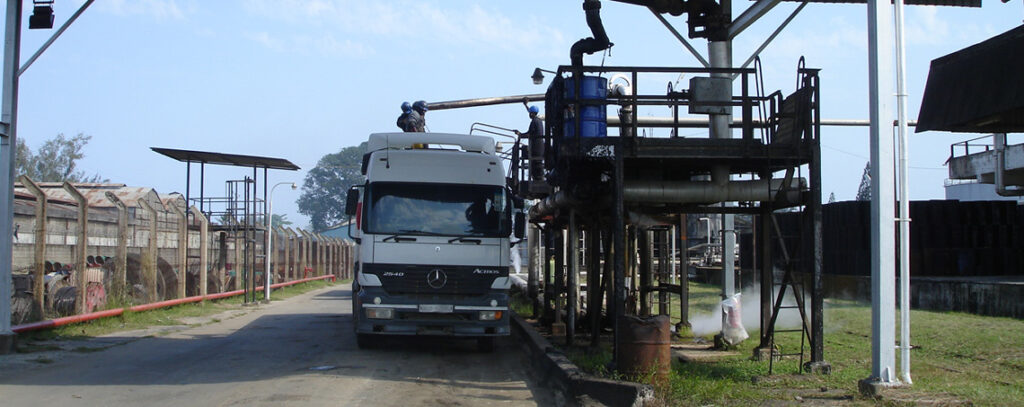- The country’s petroleum products distributor, Kenya Pipeline Company (KPC), is set to take over the refinery.
- It will utilize it for storage of super petrol, diesel, kerosene and the latest now being development of a bulk LPG (cooking gas) reserve.
- The Kenya Petroleum Refineries Limited was originally set up by Shell and British Petroleum Company BP to serve the East African region in the supply of a wide variety of oil products.
Kenya plans to fully turn its defunct oil refinery into a storage center for imported products, as the dream of refining its own crude oil fades ahead of commercial production projected to commence before 2027.
Both the government and British exploration firm, Tullow Oil, which is seeking joint ventures for the Turkana oil project, are hopeful Kenya will go into commercial oil production in the short-term.
However, it is now clear that the country has no plans to go back into refining products after the collapse of its Mombasa-based refinery, fully owned by the government.
The country’s petroleum products distributor, Kenya Pipeline Company (KPC), is set to take over the refinery and utilize it for storage of super petrol, diesel, kerosene and the latest now being development of a bulk LPG (cooking gas) reserve.
Read Also: East Africa LPG wars: Kenya blocks Tanzania’s Taifa Gas deal
Kenya Petroleum Refinery Ltd
The Kenya Petroleum Refineries Limited was originally set up by Shell and the British Petroleum Company BP to serve the East African region in the supply of a wide variety of oil products.
The Company was incorporated in 1960, under the name East African Oil Refineries Limited.
The first refinery complex which has distillation, hydrotreating, catalytic reforming, and bitumen production units was commissioned in 1963. The second refinery train was commissioned in 1974 and also has distillation, hydrotreating, and reforming units.
At the time of its establishment, in 1959, it was under a colonial agreement with ‘consolidated’ 50 per cent Shell and 50 per cent BP, before it became the East African Oil Refineries Limited. Esso and Caltex would then become shareholders in 1963.
The Kenyan government later acquired a 50 per cent stake in 1971, amid expansions including commissioning of its second complex.
In 1983, it changed to Kenya Petroleum Refinery Limited. Esso sold their shares in 1997.
In 2009, Essar again acquired a 50 per cent stake from Shell, BP and Chevron before finally bowing out in 2016, as the Kenyan government fully took over KPRL.
The refinery however did not last long after the full government acquisition as it collapsed in 2012-2013 following a financial crisis after debts owed to it by oil marketers rose to over $30 million.
Read Also: Kenya seeks private sector backing for oil dream
Oil refinery turned into storage facility
KPRL has since signed an agreement with Kenya Pipeline for a three-year lease of its storage facilities.
According to Energy and Petroleum Cabinet Secretary Davis Chirchir, the government is working towards setting up a bulk LPG import handling and storage facilities. This is soon after KPC fully takes over the refinery.
The acquisition process is on the verge of completion, according to the CS, following robust consultative engagements between the Ministry, KPC, KPRL and the County Government of Mombasa in the last few weeks.
“I am pleased to inform you that the acquisition of KPRL by KPC will be finalized in the next few weeks,” he said last week.
The Cabinet approved acquisition will see KPC acquire KPRL by way of transfer of shares without any monetary compensation.
The acquisition is envisaged to also facilitate KPC to expedite pipeline operations and enhance storage capacity for petroleum and petroleum products, thereby fostering synergy in the petroleum value chain.
Read Also: Namibia, Senegal join African petroleum producers group
Stabilizing fuel supply
The move is expected to stabilise the supply of petroleum products in the country and ensure cost-efficiency through reduced demurrage costs, said CS Chirchir.
“The acquisition will also ensure optimal utilization of the 370 acres beach front KPRL facility thereby enabling the government to put up bulk LPG import handling and storage facilities with a view to increase Kenya’s LPG consumption from 7kg per capita to 10kgs in the next 3 to 5 years” he added.
The merger of the two government institutions is further expected to increase storage capacity for the country and enable execution of the planned capacity enhancement of the pipeline system.
The government is banking on the initiative to also manage petroleum and petroleum products price hikes, and position Mombasa as the dominant trading hub in East Africa.
KPRL and KPC had earlier entered a lease arrangement in March 2017 where KPC has been managing and operating KPRL facilities.
“In this regard, the two institutions have a working relationship. KPRL staff will not lose their jobs after the takeover, they will be absorbed by KPC,” Chirchir said during a consultative forum in Mombasa.
Operationalization of the KPRL facility is expected to elevate Mombasa’s status as a key business hub in the region, boost the county’s economic activities and empower surrounding communities, particularly those residing in Changamwe constituency.
In the next one year, the government, KPC and KPRL will work on post-acquisition matters which include funding of KPRL, jobs security at KPRL, mandate of KPRL, harmonisation of HR structures and HR instruments with those of KPC.
They will also look into resolution of matters around the stalled Collective Bargaining Agreements (CBA) negotiation process with the representative Union.
Project oil Kenya
Meanwhile, the dream to become a net oil exporter remains alive as Tullow Oil inches closer to securing strategic partners in Project Oil Kenya.
Indian Oil Company–ONGC Videsh Limited (OVL) could take up a stake in Tullow Oil’s Kenyan asset. This follows the exit of joint venture partners–Africa Oil Corp and Total Energies early this year, in what has been described as “ due to differing internal strategic reasons.”
Canadian firm-Africa Oil Corp reportedly dropped from the project on concerns over possibilities of finding an investor who would support commercial exports of Kenya’s crude oil, including construction of the 824km Lokichar-Lamu oil pipeline.
Total on the other hand has shifted focus on already producing fields in other markets.
It left Tullow with no option but to assume a 100 per cent equity position but the magnitude of the project requires spreading of risks, according to experts, and multiple sources of revenues.
“Tullow confirms that several interest parties including India’s ONGC Videsh Limited have expressed their interest in coming on-board as a strategic partner in the development of our Kenyan asset,” Tullow Kenya BV managing director Madhan Srinivasan, said.
Tullow assets in Kenya covers blocks 10BB, 13T, and 10BA in the South Lokichar Basin and is operated by Tullow Kenya BV.
The Kenyan government has also affirmed its support for Tullow in search of strategic partners, whilst calling on the private sector to invest in related infrastructure, including the planned crude oil pipeline.
Talks on with Chinese, Indian investors
According to CS Chirchir, the government is in talks with Chinese and Indian investors into putting capital in the project, as it reviews the Final Investment Decision tabled by Tullow.
He said Kenya would continue to back Tullow’s push for commercial oil production in Turkana, despite the production timelines shifting.
The ministry hopes to have made a decision on the Final Development Plan (FDI) by end of September, which would then be tabled before Cabinet, and a final vote by Parliament.
While the FDI was to gauge weather Kenya will opt for a refinery or construct the 852 km Lokichar-Lamu pipeline for transporting crude oil from Turkana, to Lamu port for export, turning the refinery into a full storage facility seems to be the end of future refining activities.
Currently, Kenya imports refined products and LPG, with petroleum the largest single import item, accounting for 25 per cent of the import bill.











